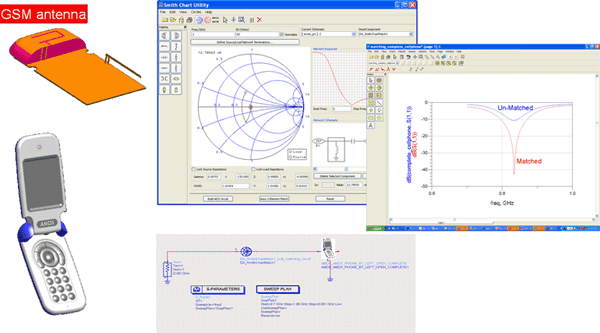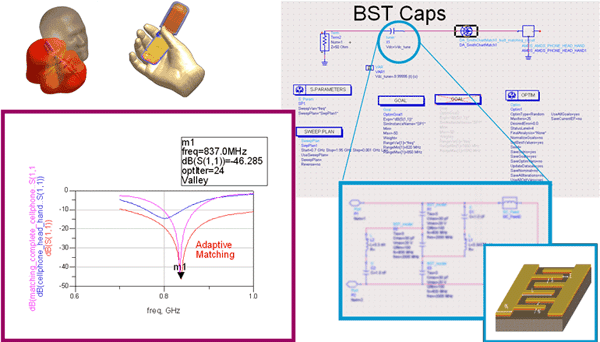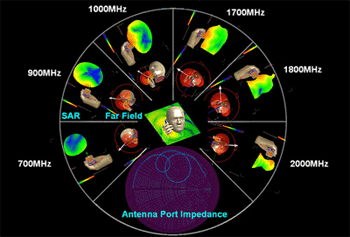What are you looking for?
AMDS Release 2007.6
Highlights
AMDS 2007.6 -- Now linked to ADS
Create ADS design kits (simulation libraries) from within AMDS. Link your 3D EM designs to the full ADS circuit and system simulation set.
In the example above, schematic capture in ADS, showing the Palette of the mobile phone design kit (left), the Smith Chart utility and a component representing the S-parameter set from a 3D EM simulation of a mobile phone with hand and head.
Use Our Intuitive ADS Design Guides to match your antennas to the real world
Many antennas are designed in isolation. Once the total device is assembled, their performance deteriorates. You can now bring the real world environment into our circuit simulator and use our Smith Chart Utility or other intuitive design guides to synthesize matching circuits.
In the example above, the Isolated GSM antenna is detuned after introducing into a mobile phone (unmatched S11 parameters, blue curve), using the Smith Chart Utility inside ADS, you can easily define the matching network properties. The matched antenna shows a 30dB performance improvement (Matched S11 parameters Red curve).
Put yourself in the RF front seat: Use Advanced Libraries to match your antenna’s in real time through adaptive tuning
Antennas of handheld devices are detuned through human manipulation. Use the ADS libraries with the latest technologies such as tunable BST or MEMS devices to simulate real time adaptive antenna matching.
In the example above, the capacitive value of a BST (ferroelectric material called Barium Strontium Titanate) device can be controlled by applying a different DC bias voltage. Within ADS we run an optimization routine to minimize the S11 value of the antenna within a given frequency band. When the antenna performance changes through human manipulation (S11 parameters move from the pink to the blue curve), the optimization procedure drives the DC voltage and changes the values of the capacities in the tuning circuit. As such we adaptively match the antenna to the new operating conditions (Adaptively Matched S11 parameters Red curve).
Quickly compare Multi-Frequency SAR and far fields in a single time-sweep. Using running DFT:
In the previous release, far fields and SAR calculations needed a complete re-simulation for every frequency. In AMDS 2007.6, they can be generated out of a single time sweep. This saves the user considerable setup and simulation time.
In the example above, SAR (power absorption inside head) and far fields for different frequencies. On the bottom, we see a smith chart plot of the dual band GSM antenna impedance.




